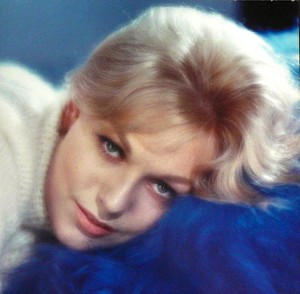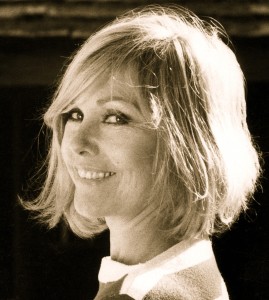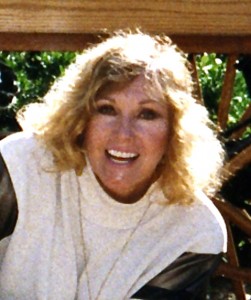Kim Novak
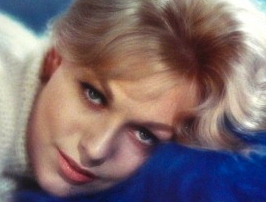
Hollywood & the Stars: In Search of Kim Novak
Hollywood & the Stars was a US TV series broadcast in the 1960’s by NBC. This episode studies the life and background of the star, Kim Novak.
Marilyn Pauline Novak (born February 13, 1933), professionally known as Kim Novak, is a retired American film and television actress.
She began her career in 1954 after signing with Columbia Pictures. There, she became a successful actress, starring in a string of movies, among them the critically acclaimed Picnic (1955). She later starred in such popular successes as The Man with the Golden Arm (1955) and Pal Joey (1957). However, she is perhaps best known today for her “dual role” as both Judy Barton and Madeleine Elster in Alfred Hitchcock’s classic thriller Vertigo (1958). Novak was popular in box office popularity polls, and she starred opposite several top leading men of the era, including James Stewart, William Holden, Frank Sinatra, Tyrone Power, and Kirk Douglas. Although still young, her career declined in the early 1960’s, and after several years in a series of lackluster films, she withdrew from acting in 1966. She has only sporadically returned since. She later returned to the screen in The Mirror Crack’d (1980), and had a regular role on the prime time series Falcon Crest (1986–87). After a disappointing experience during the filming of Liebestraum (1991), she has permanently retired from acting, citing she has no desire to return.
Early Life
Kim Novak was born Marilyn Pauline Novak in Chicago, Illinois on February 13, 1933. She is the daughter of Joseph and Blanche (née Kral) Novak. Both her parents were of Czech descent. Her father was a history teacher and worked as a dispatcher on the Chicago, Milwaukee and St. Paul Railroad, and her mother was a factory worker.
She attended William Penn Elementary, Farragut High School, and Wright Junior College. She won two scholarships to the School of the Art Institute of Chicago, and during the summer break in her last semester of junior college, Novak went on a cross-country tour modeling for a refrigerator company at trade shows.
Acting Career – Early career and success (1954–1957)
While stopping by Los Angeles, Novak was crowned “Miss Deepfreeze” by the refrigerator company. While there, she and two other models stood in line to be extras in The French Line (1954), a film starring Jane Russell. It was here that she was discovered by an agent, who signed her to a long-term contract with Columbia Pictures. From the beginning of her career, she wanted to be an original and not another stereotype. Therefore, she fought with Columbia’s chief, Harry Cohn, over the changing of her name. He suggested the name “Kit Marlowe”, arguing that “Nobody’s gonna go see a girl with a Polack name!” But she insisted on keeping her name, saying, “I’m Czech, but Polish, Czech, no matter, it’s my name!” The two sides eventually settled on the name “Kim Novak” as a compromise.
Columbia intended for Novak to be their successor to Rita Hayworth, their biggest star of the 1940s, whose career had declined; also, the studio was hopeful that Novak would bring them the same success 20th Century-Fox was having with Marilyn Monroe. Her first role for the studio was in the film noir Pushover (1954), in which she received third billing below Fred MacMurray and Philip Carey. She then co-starred in the romantic comedy Phffft! (1954) as Janis, a Monroe-type character who finds Jack Lemmon’s character, Robert Tracey, “real cute”. Both films were reasonably successful at the box office, and Novak received favorable reviews for her performances. In her third feature film, 5 Against the House (1955), a gritty crime drama, she received equal billing with Guy Madison. It was only a minor critical and box office success.
She then played Madge Owens in the film version of Picnic (1955), co-starring William Holden and Rosalind Russell. Its director, Joshua Logan, felt that it would be more in character for Novak to have red hair; she agreed to wear a red wig during filming. Picnic was a resounding critical and box office triumph, and Novak won a Golden Globe Award for Most Promising Newcomer. She was also nominated for BAFTA Film Award for Best Foreign Actress, but did not win. She appeared as a mystery guest on the popular game show What’s My Line? on February 5, 1956 to promote the film’s opening at the Radio City Musical Hall. Director Otto Preminger then cast her in The Man with the Golden Arm (1955), in which she played Frank Sinatra’s sultry ex-girlfriend. In a cast also consisting of Eleanor Parker, Novak received praise for being one of the film’s bright spots, and the film was a box office triumph.
Novak’s next project, The Eddy Duchin Story (1956), cast her as Marjorie Oelrichs, the wife of pianist Eddy Duchin, played by Tyrone Power. Because she and Power did not get along during filming, Novak nearly considered backing out of the production, but decided against it. At the time of its release, the film was a critical and box office hit, with many suggesting that Novak’s advertisements for No-Cal diet soda contributed positively to the film’s success. Given the choice of her next project, she selected the biopic Jeanne Eagels, in which she portrayed the immensely popular silent screen actress who suffered an addiction to heroin. Co-starring Jeff Chandler, the film was a largely fictional account of Eagels’ life, and despite its success, Eagels’ family sued Columbia over the way Eagels had been depicted in the movie.
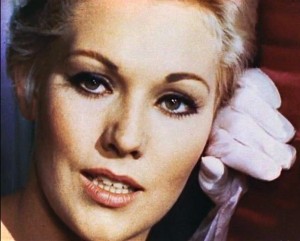 Novak singing “My Funny Valentine” in Pal Joey (1957).
Novak singing “My Funny Valentine” in Pal Joey (1957).
After appearing in a series of successful movies, Novak became one of the biggest box office draws in 1957 and 1958. Columbia then placed her in a film adaptation of Pal Joey in 1957, based on the 1940 novel and Broadway play both written by John O’Hara. Playing Linda English, a naive showgirl, she again co-starred opposite Frank Sinatra, as well as Rita Hayworth. Released in October, the film received favorable reviews; Variety called the film “strong, funny entertainment”, although Novak’s performance has generated a mixed reaction, partly because of noticeable lack of on-screen charisma. The movie was a box office hit and has been considered one of become regarded as one of Novak’s better performances.
Vertigo (1958)
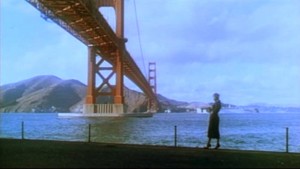 Kim Novak at the Golden Gate Bridge in Vertigo.
Kim Novak at the Golden Gate Bridge in Vertigo.
Director Alfred Hitchcock was working on his next film, Vertigo, when his leading actress, Vera Miles, became pregnant and had to withdraw from the complex role of Judy Barton. Hitchcock approached Harry Cohn to offer Novak the female lead without even requesting a screen test. Though Cohn hated the script, he allowed Novak to read it because he considered Hitchcock to be a great director. Novak loved it and could identify with the character. At the same time, she was striking for more money from Columbia, and refused to show up for work on the Vertigo set to protest her salary of $1,250 a week. Novak hired new agents to represent her and demanded an adjustment in her contract. Cohn suspended her but, after a few weeks of negotiations, he relented and offered her a new contract worthy of a major star. Novak could identify with the personality of her character Judy as she felt she went through the same thing when she arrived in Hollywood:
From my point of view, when I first read those lines where she says, “I want you to love me for me,” and all the talking in that scene, I just identified it with so much because going to Hollywood as a young girl and suddenly finding they want to make you over totally, it’s such a total change and it was like I was always fighting to show some of myself, feeling that I wanted to be there as well. It was like they’d do my hair and go and redo a bunch of things. So I really identified with the fact of someone that was being made over with the resentment, with wanting to. Needing approval and wanting to be loved and willing, eventually, to go to any lengths to get that by changing her hair and all of these different things. And then when Judy appears, it’s another story and then when she has to go through that change. I really identified with the movie because it was saying, “Please, see who I am. Fall in love with me.”
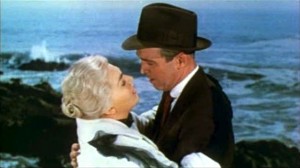 Kim Novak with James Stewart in Vertigo.
Kim Novak with James Stewart in Vertigo.
The film was poorly received at the time of its release in 1958 and failed at the box office, but has since been re-evaluated and is widely considered one of the director’s best works. In the 2012 British Film Institute’s Sight & Sound critics’ poll, Vertigo was voted as the best film of all time, displacing Orson Welles’ Citizen Kane from the position it had occupied since 1962. Novak received mixed reviews for her performance, but she managed to surprise film critics. While Bosley Crowther, writing for The New York Times, described her as “really quite amazing,” The consensus regarding her performance also changed with time. For example, film critic David Thomson thought it was “one of the major female performances in the cinema” and film director Martin Scorsese called it “extraordinary,” adding that Novak’s work was “so brave and emotionally immediate.” However, Novak was disappointed by her performance when she watched the film in 2013. “I was really disappointed. Both characters were exaggerated. They’ll always remember me in Vertigo, and I’m not that good in it, but I don’t blame me because there are a couple of scenes where I was wonderful.”
Decline and other early ventures (1958–1969)
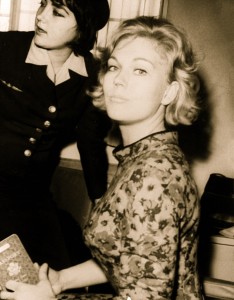 Photo of Kim Novak. Madrid, 1962
Photo of Kim Novak. Madrid, 1962
In 1958, Novak again worked with Stewart in Richard Quine’s Bell, Book and Candle, a comedy tale of modern-day witchcraft, that proved to be a box office success. The following year, she starred opposite Fredric March in the acclaimed Middle of the Night (1959), which she has described as her favorite film that she has been in. Novak also cites her performance in Middle of the Night as her best.
Novak starred opposite Kirk Douglas in Strangers When We Meet (1960). Richard Quine was the director, as well as her fiancé at the time. The studio planned to give them the house that was built as part of the story line during the filming as a wedding gift, but their wedding never came to be. Instead it was during the last film that she and Quine made together in 1962, The Notorious Landlady with Jack Lemmon, that she discovered and purchased her future home by the sea near Big Sur, California. It was to become her retreat and salvation after leaving Hollywood.
She made an independent five-picture deal with Martin Ransohoff and Filmways Pictures to co-produce, but it proved to be a bad choice due to clashes with personalities over scripts. Their first endeavor, Boys’ Night Out (1962), was unsuccessful. After her Hollywood house survived the big Bel Air fire of 1961, it was finally lost a few years later when it was swept away with most of her belongings in a mudslide in 1966. During that interim, she made W. Somerset Maugham’s drama Of Human Bondage (1964) with Laurence Harvey in Ireland.
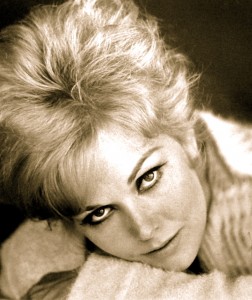 Photo of Kim Novak. Los Angeles, 1964
Photo of Kim Novak. Los Angeles, 1964
Kiss Me, Stupid followed for director Billy Wilder. Actor Peter Sellers had originally been selected, but he had suffered a heart attack, so Ray Walston took his place. Also co-starring was Dean Martin. The film had problems getting released due to conflicts with the Legion of Decency. Later it was rediscovered and acclaimed for its forward thinking and got rave reviews, particularly for Novak’s performance as “Polly the Pistol.” In 1965, she made The Amorous Adventures of Moll Flanders in England with British actor Richard Johnson. Novak married Johnson in 1965 and divorced him in the spring of 1966. They remained good friends. By the end of 1966, she was emotionally drained and no longer wanted to live the life of a Hollywood movie star, in the glare of the spotlight with the press criticizing her every move. When the mudslide took her Bel Air home and cost her entire life’s savings in bulldozer fees, she moved away from Hollywood to discover herself anew.
From then on acting became a job and was no longer a career of choice. Novak preferred to concentrate on her first love, the visual arts, often writing poetry to accompany her paintings, and even writing some song lyrics. Harry Belafonte and the Kingston Trio recorded some of her folk songs in the 1960’s.
In 1968, she returned to the screen for The Legend of Lylah Clare (1968), starring Peter Finch and Ernest Borgnine, and directed by Robert Aldrich. She played a dual role, portraying a person who becomes possessed by a look-alike film actress who gets made over by her obsessive-compulsive director lover. Robert Aldrich asked Novak to do a German accent for that role, but she felt it was unbelievable and over the top, so she did not want to do it; however, he never insisted. At the premiere, Novak was totally shocked to hear her voice had been overdubbed by a German actress in many scenes. Aldrich had never told her, nor had he given her the opportunity to dub it herself. She was extremely upset. The last film Novak made in the ’60s was The Great Bank Robbery (1969), opposite Zero Mostel, Clint Walker, and Claude Akins.
Acting sporadically (1970–1991)
After spending nearly four years she described as a “self-imposed vacation,” Novak agreed to take part in two projects. She returned to the screen with a role in the horror anthology film Tales That Witness Madness (1973). Novak also starred as Las Vegas chorus girl Gloria Joyce, a character she could identify with, in the made-for-TV movie, The Third Girl From the Left (1973), with her real-life boyfriend at the time, Michael Brandon. Novak admitted a preference for TV films as she thought they were faster to shoot than features. She described scripts of that time as offensive, saying she disliked the unnecessary sex she found in most of them. In 1975, Novak took part in the ABC movie Satan’s Triangle because she liked the story which dealt in the supernatural. Novak had a small role in The White Buffalo (1977), a western starring Charles Bronson. She ended the decade by playing Helga in Just a Gigolo (1979), opposite David Bowie.
In 1980, Novak played fictional actress Lola Brewster in the British mystery-thriller The Mirror Crack’d, based on the story by Agatha Christie. She co-starred alongside Angela Lansbury, Tony Curtis, Rock Hudson, and Elizabeth Taylor. Novak did not appear in any feature films during the remainder of the 1980’s. Her acting credits during the decade included the ensemble television movie Malibu (1983) and the pilot episode of The New Alfred Hitchcock Presents (1985).
Producers of the successful primetime soap opera Falcon Crest offered Novak a role in their series similar to her character in Vertigo. She appeared as the secretive “Kit Marlowe” in 19 episodes from 1986 to 1987. It was Novak’s idea to name her character Kit Marlowe, as it was the stage name that Columbia had wanted her to use when she started out in the business. The former Marilyn Pauline Novak wryly described this turn of events as effectively being Cohn’s revenge on her from beyond the grave.
Novak decided to re-establish contact with her agent and seek challenging roles. She returned to film with the leading role of Rose Sellers in The Children (1990) opposite Ben Kingsley. A British-German coproduction, the film only had a limited release.
Director Mike Figgis offered Novak the role of a terminally ill writer with a mysterious past in his thriller Liebestraum (1991) opposite Kevin Anderson and Bill Pullman. Novak loved the script and thought it was going to be an important picture. However, she had a difficult experience with Figgis. She agreed to do the film under the impression she was going to play the whole character with the flashbacks scenes. Figgis felt Novak was unable to play the flashback role the way he wanted and hired actress Sarah Fearon for those scenes. Novak and Figgis had conflicts on the set as their visions of the script differed, clashed, and were in many ways diametrically opposed. She felt the story was too personal for the director, as it was about his own life and Novak was playing his mother. She felt he considered her a puppet and, owing to battles with him over how to play her character, most of her scenes were cut. “He wanted what he thought Hitchcock had made over,” she said. “But Hitchcock didn’t do that. Figgis didn’t know Hitchcock. So he treated me the way he thought Hitchcock must have, tried to manipulate me into doing exactly… I went crazy.” Novak was hurt and distraught with the Liebestraum experience as it took her back to her Columbia: “It was such a painful thing for me because it took me right back to Harry Cohn and all that time. And back into saying, ‘Look, for God’s sake, haven’t you heard it enough? We don’t want you to do anything. Just be “Kim Novak.”’ That movie pained me more than any movie in the world could do.” Novak later told Hollywood Life magazine in 2005. “I know he thinks I’m a total bitch. That role was fabulous, full of depth. When I interpreted it the way I thought was evident in the incredible script, he said, ‘We’re not making a Kim Novak movie, just say the lines. If you continue to play the role this way, I’m going to cut you out of the movie,’ and he pretty much did that.” In the interview, Novak admitted she was “unprofessional” not to obey her director.
Novak was supposed to do a comedy with the French director Claude Berri and also starring Peter Falk. The film was never made and following the difficult experience with Liebestraum, she has usually cited that experience as the reason for her decision to retire from the film industry. In 2004, she told the Associated Press:
I got so burned out on that picture that I wanted to leave the business, but then if you wait long enough you think, “Oh, I miss certain things.” The making of a movie is wonderful. What’s difficult is afterward when you have to go around and try to sell it. The actual filming, when you have a good script—which isn’t often—nothing beats it.

